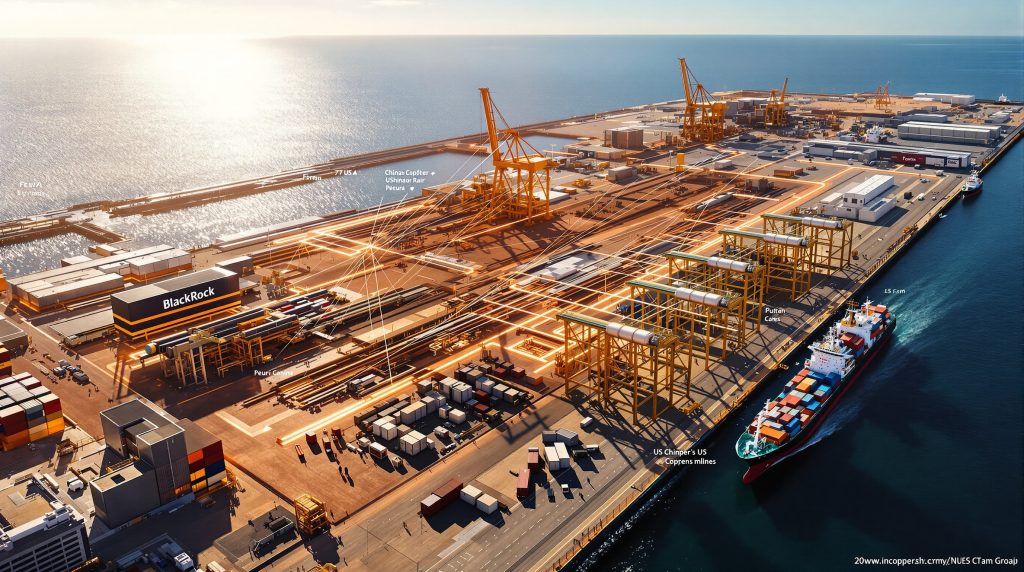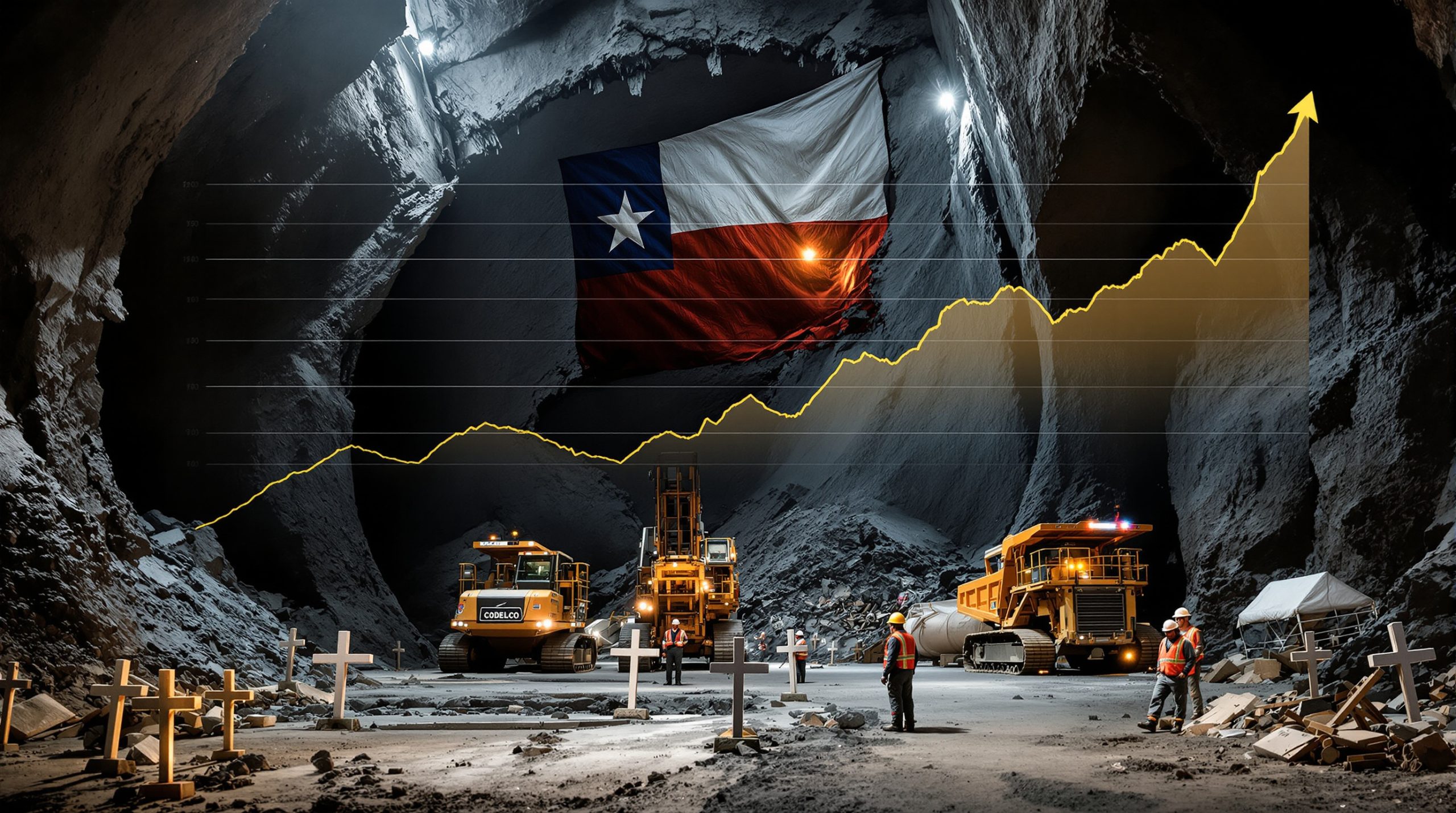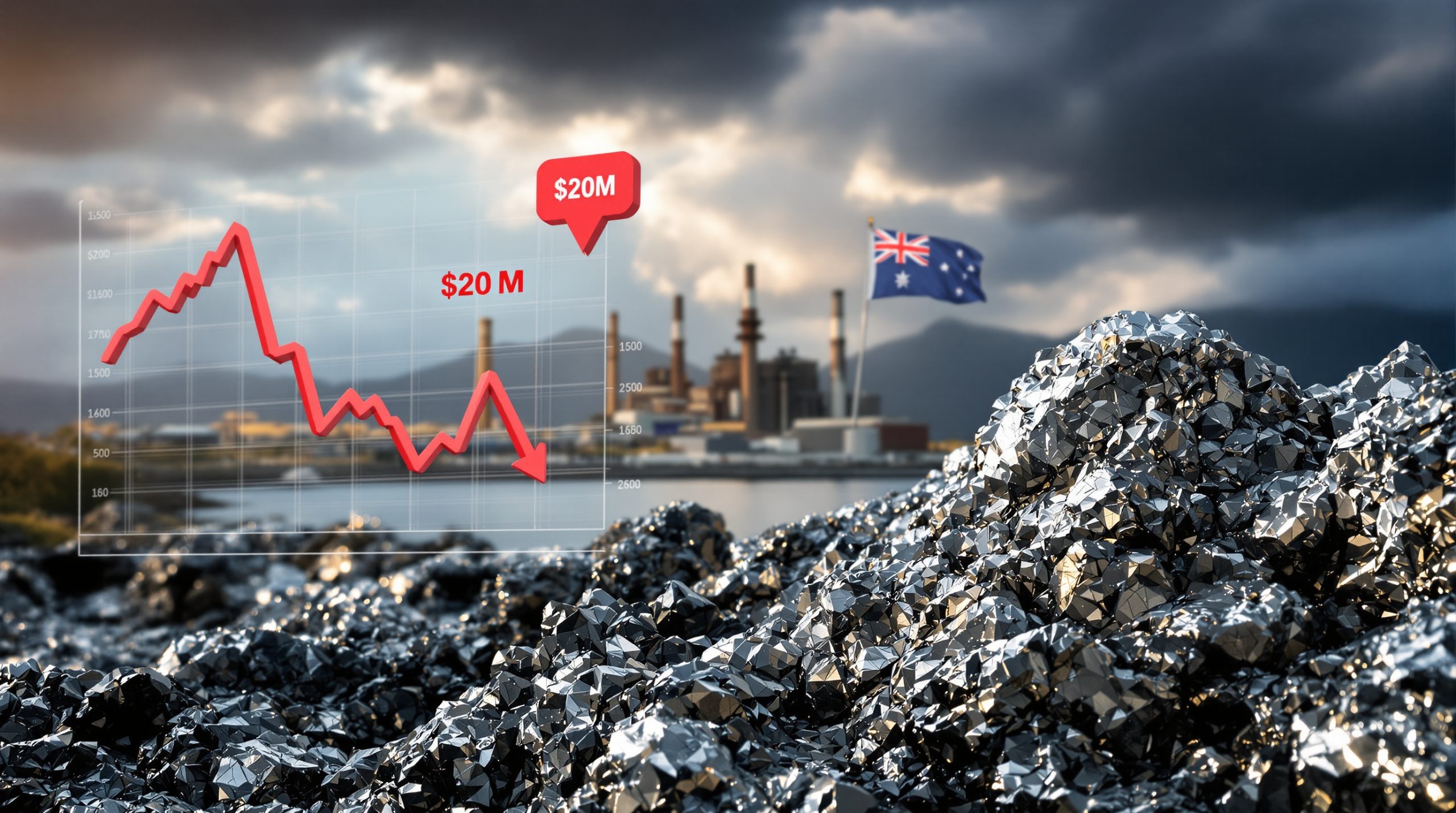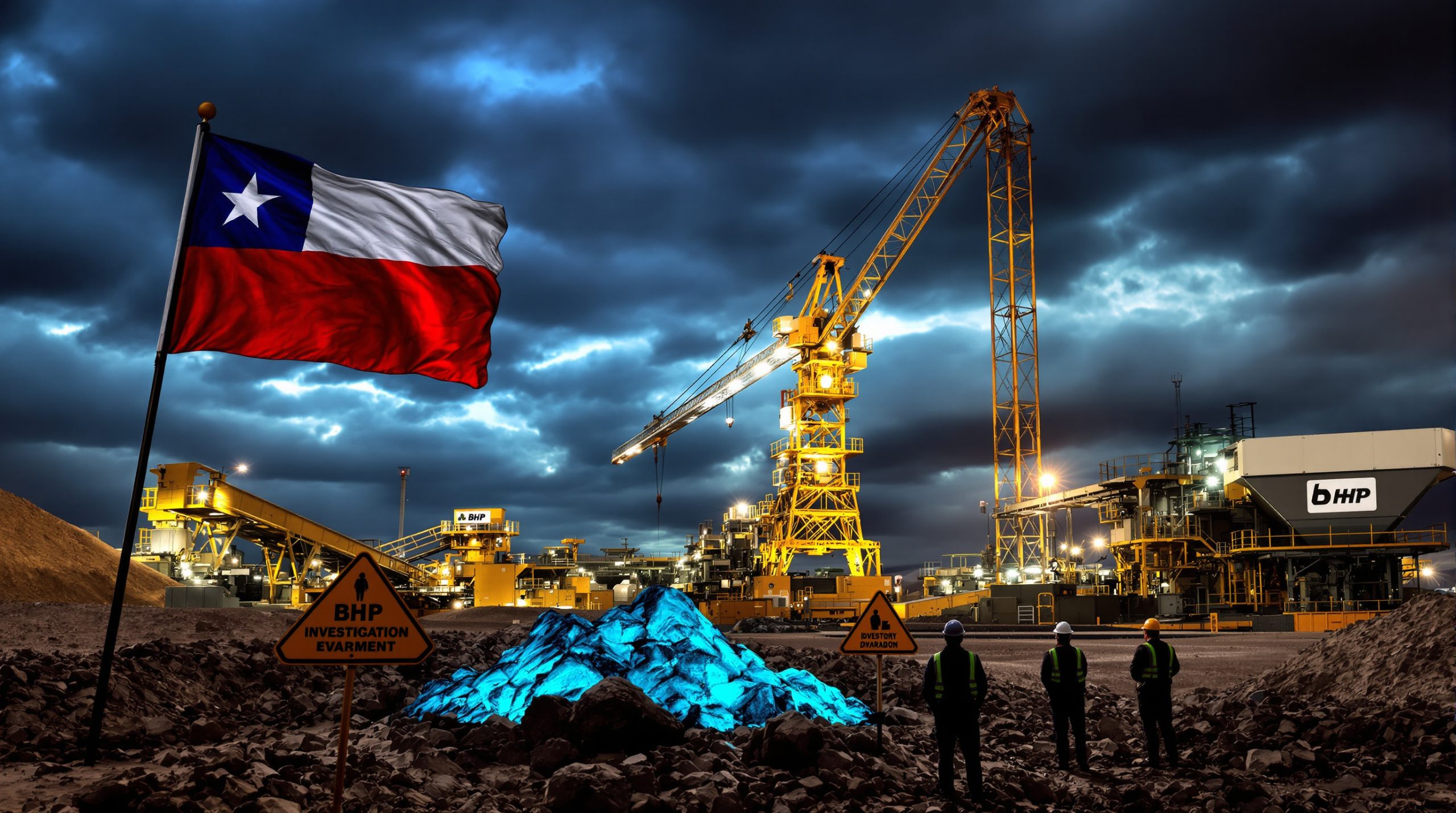What is the Matarani Port Expansion Project?
The Matarani port, situated in southern Peru, stands as Latin America's premier copper-shipping hub and has recently secured a significant $700 million expansion approval. This substantial private capital investment aims to enhance the port's infrastructure to accommodate increasing exports from Peru's growing copper mining sector. The expansion represents a strategic move to maintain the port's competitive edge in the global copper logistics market.
The Peruvian government authorized the expansion under a decree issued in October 2025, which includes a 30-year extension of Terminal Internacional del Sur SA's (Tisur) operating concession. This arrangement allows Tisur to bypass competitive tendering processes that would typically be required for such projects, streamlining the development timeline.
Key Components of the Expansion
The $700 million investment will fund several critical improvements to the port's capabilities:
- New specialized infrastructure designed specifically for handling increased copper exports
- Enhanced operational systems to maintain efficient processing of mineral shipments
- Modernized loading and unloading facilities to accommodate larger vessels
- Environmental protection measures to ensure sustainable operations
- Improved connectivity with inland transportation networks
While specific construction milestones haven't been publicly disclosed, industry experts anticipate that construction will likely begin after Q3 2025, with a phased implementation approach over several years.
How Does BlackRock's Involvement Shape the Project?
BlackRock's Global Infrastructure Partners acquired a 50% stake in Tisur in 2023, positioning the investment giant as a key stakeholder in this strategically important expansion. This investment occurred two years before the expansion approval, demonstrating BlackRock's long-term vision for critical mineral infrastructure development in Latin America.
The timing of BlackRock's entry into this market segment is particularly notable given the increasing global competition for control of mineral resource supply chains. By securing a position in Latin America's leading copper export facility, BlackRock has established a foothold in a sector experiencing growing geopolitical importance.
BlackRock's Strategic Position
BlackRock's involvement in the Matarani port expansion offers several strategic advantages:
- Direct participation in critical mineral supply chain infrastructure at a time of growing demand
- Positioning within Peru's copper sector, the world's third-largest copper producer
- Competitive counterbalance to Chinese-backed infrastructure projects in the region
- Access to logistics revenue from multiple major mining operations
- Potential for long-term returns from essential export infrastructure
This investment aligns with broader industry trends showing increased institutional investment in critical mineral infrastructure, particularly in regions with established mining operations and growth potential.
Why is the Expansion Strategically Important for Global Copper Markets?
The Matarani expansion holds significant strategic importance for global copper markets as it strengthens Peru's position as the world's third-largest copper producer. The port serves as a vital logistics hub for multiple major mining operations, facilitating the efficient export of copper to international markets at a time when global copper supply continues to rise.
Industry analysts note that over 25% of global copper supply is currently constrained by environmental, social, and governance (ESG) roadblocks, with several major reserves in the United States, Peru, Chile, and Panama facing development hurdles. This supply constraint makes efficient export infrastructure for existing production increasingly valuable.
Current Mining Operations Served
The Matarani port currently facilitates exports from several major mining operations:
- Las Bambas (owned by China's MMG Ltd.)
- Freeport-McMoRan operations across Peru
- Glencore facilities throughout the region
- Hudbay Minerals projects including Constancia
- Various smaller mines in southern Peru
What makes Matarani particularly remarkable is its ability to handle copper from five medium-to-large mines simultaneously—a capability that, according to port management, is unmatched globally. This concentration of export capacity creates significant logistical efficiencies for the Peruvian mining sector.
How Does the Expansion Reflect US-China Competition in Latin America?
The approval of Matarani's expansion represents a significant development in the increasingly competitive landscape of infrastructure investment in Latin America. This expansion, backed by US-based BlackRock, stands in direct contrast to growing Chinese infrastructure investments in Peru's port sector.
As Tisur's General Manager Mauricio Nuñez del Prado acknowledged in a recent interview: "There's undoubtedly a geopolitical element in how the big investments in Peruvian ports have been taking place." This candid statement confirms the competitive dynamics between Western-backed and Chinese-backed infrastructure in the region.
Chinese Infrastructure Investments in Peru
China has made substantial investments in Peru's port infrastructure:
- $1.3 billion Chancay port development north of Lima
- Recently awarded San Juan de Marcona port project, located 280 miles north of Matarani
- Growing presence across Peru's logistics and transportation sectors
- Strategic positioning for control of mineral export routes
These parallel developments highlight the emerging pattern of competing spheres of influence in Latin American infrastructure, with both Western and Chinese interests seeking to secure positions in critical export channels.
Competitive Dynamics
The Matarani expansion creates several competitive counterweights to Chinese infrastructure investments:
- Establishes an alternative, Western-aligned export channel for mining companies
- Reinforces existing client relationships with both Western and Chinese mining operations
- Creates options for mining companies concerned about overreliance on a single export route
- Positions BlackRock in a strategically important node in global copper projects
This competition for infrastructure control reflects broader trends in resource geopolitics, exemplified by China's recent expansion of rare earth export restrictions. In October 2025, China's Ministry of Commerce added five rare earths (holmium, erbium, thulium, europium, and ytterbium) to its controlled list, bringing the total to 12 restricted rare earth elements—demonstrating China's willingness to use resource control as a geopolitical tool.
What Challenges Does the Matarani Port Face?
Despite the significant expansion plans, Matarani faces several substantial challenges that could impact its long-term competitiveness in the regional copper export market. Perhaps the most pressing concern is client retention, particularly regarding its largest Chinese client.
Client Retention Concerns
Las Bambas, owned by China's MMG Ltd., represents Matarani's most significant Chinese client, but its contract with the port expires in 2029. This approaching deadline presents a major strategic challenge:
- Las Bambas has indicated it is "actively conducting studies around the San Juan port area"
- The company regularly reviews logistics options to optimize shipments
- Community impacts along Peru's Southern Road Corridor may influence future routing decisions
- Chinese ownership of Las Bambas may factor into export route preferences
Nuñez del Prado acknowledged this challenge directly, stating: "It will always be their prerogative—either for economic or geopolitical reasons—to seek alternatives." This realistic assessment underscores the competitive pressures facing Matarani.
Competitive Pressures
Beyond client retention, Matarani faces broader competitive challenges:
- Chinese-backed ports offering alternative export routes with potential preferential terms
- Need to maintain cost advantages despite significant capital investment
- Balancing commercial considerations with geopolitical realities
- Addressing community and environmental concerns along transport corridors
- Demonstrating superior efficiency compared to newer facilities
The port's expansion strategy appears designed to address these challenges through enhanced infrastructure and capacity, but the competitive landscape will continue to evolve as new facilities come online.
What Makes Matarani Port Unique in Global Copper Logistics?
According to Tisur General Manager Mauricio Nuñez del Prado, Matarani offers unique logistical advantages that set it apart from competing facilities worldwide. "There's no other installation like this in the world that handles copper from five medium-to-large mines in one place," he stated, highlighting the port's exceptional concentration of copper export capacity.
Integrated Infrastructure Advantages
Several features contribute to Matarani's distinctive logistics profile:
- Dual transportation modes with both truck and rail connections
- Direct concentrate delivery inside port facilities, minimizing transfer points
- Purpose-built storage and handling systems designed specifically for copper concentrate
- Integrated logistics chain from mine to vessel, streamlining export processes
- Concentration of multiple major mining clients in a single export facility
This integration of multiple transport modes and direct delivery capabilities creates operational efficiencies that would be difficult to replicate in newer facilities. The established relationships with multiple mining operations also provide a stable client base, though this advantage faces challenges as contracts approach renewal periods.
How Will the Expansion Impact Peru's Copper Industry Growth?
The Matarani port expansion aligns with Peru's broader copper industry development trajectory, which includes several major mining projects expected to come online later this decade. The expansion will help eliminate potential logistics bottlenecks that might otherwise constrain the country's copper production growth.
Future Mining Projects Set to Benefit
Several significant mining developments stand to benefit from enhanced export capacity:
- Teck Resources projects under development in Peru's copper belt
- Southern Copper Corporation expansions across multiple sites
- Potential new exploration projects from various mining companies
- Increased production from existing mines as operations expand
The expansion creates a virtuous cycle potential where enhanced export capacity encourages mining investment, which in turn supports port utilization. This alignment of infrastructure and production capacity represents sound strategic planning for Peru's mining sector.
Industry Growth Projections
While specific production projections from individual mining projects require additional research, the broader industry context suggests significant growth potential:
- Enhanced export capacity allowing mines to operate at optimal production levels
- Reduced logistics constraints enabling new project development
- Improved competitive position for Peru in global copper markets
- Strategic positioning for future increases in surging copper demand
As a point of regional comparison, Chile's Antofagasta recently initiated the Centinela mine expansion with a new pit. The Encuentro pit will serve as the main ore source for Centinela's second concentrator, adding 95,000 tonnes per day of copper processing capacity. This development illustrates the scale of copper expansion projects in the region that will require efficient export infrastructure.
What Are the Economic Implications for Peru?
The Blackrock-backed Peru copper port expansion carries significant economic implications for Peru, reinforcing the country's position as a major player in global copper markets and potentially attracting additional investment across the mining value chain.
Economic Benefits
The $700 million expansion project offers several potential economic advantages:
- Direct job creation during the construction phase
- Permanent employment opportunities in expanded operations
- Enhanced tax revenue from increased export volumes
- Potential for additional mining investment due to improved logistics
- Strengthened competitive position in global mineral markets
- Potential for additional services and suppliers to develop around the port
For Peru, which ranks as the world's third-largest copper producer, maintaining efficient export infrastructure is essential to capturing the full economic value of its mineral resources. The expansion helps ensure that logistics constraints don't become a bottleneck limiting the country's mining sector growth.
How Does This Fit Into Global Copper Supply Trends?
The Matarani expansion occurs against a backdrop of growing global demand for copper, particularly driven by energy transition technologies and infrastructure development. Copper prices have shown strength in 2025, trading at $5.167 per pound as of October 10, reflecting the metal's essential role in electrification and renewable energy.
Global Copper Market Dynamics
Several key trends influence the strategic importance of the Matarani expansion:
- Growing demand from renewable energy and electrification sectors
- Supply constraints from aging mines and development hurdles
- ESG challenges limiting new project development in multiple regions
- Over 25% of global copper supply currently trapped by environmental, social, and governance roadblocks
- Strategic competition for control of copper supply chains
The port expansion strengthens Peru's ability to meet global demand at a time when copper supplies face various constraints. This positions the country advantageously as energy transition technologies drive increased copper consumption, according to copper market insights from industry experts.
Investment Context
The broader investment landscape for commodities provides additional context for understanding the Matarani expansion. As of October 10, 2025, precious metals have shown significant strength, with gold trading at $4,006.40 per ounce and silver at $48.395 per ounce. This strong performance in precious metals reflects growing investor interest in hard assets, a trend that extends to industrial metals like copper with clear demand drivers. Many investors are exploring various copper investment strategies to capitalize on these market conditions.
According to a recent Peru mining investment report by GBR, the country continues to maintain its position as a premier destination for mining investment in Latin America, with substantial projects in the pipeline across various commodities.
Disclaimer: The commodity prices and market trends mentioned in this article reflect conditions as of October 10, 2025. Prices and market conditions are subject to change, and readers should consult current market data before making investment decisions.
FAQ: Blackrock-Backed Peru Copper Port Expansion
What is the current capacity of the Matarani port?
While specific throughput figures require additional research, Matarani currently serves as Latin America's top copper-shipping hub, handling exports from multiple major mining operations in Peru, including Las Bambas, Freeport-McMoRan, Glencore, and Hudbay Minerals facilities.
How will the expansion affect local communities?
The expansion is expected to create jobs during both construction and operation phases. Detailed community impact assessments would be part of the project's development process, particularly regarding transportation corridors connecting mines to the port.
When will the expanded facilities be operational?
While specific timelines haven't been publicly disclosed, major port expansion projects typically require 3-5 years from approval to full operation, suggesting completion might be expected around 2028-2030.
How does this expansion compare to Chinese port investments in Peru?
The $700 million Matarani expansion is smaller than the $1.3 billion Chinese-backed Chancay port development, but represents a significant Western-aligned investment in Peru's critical infrastructure.
What advantages does Matarani offer over competing ports?
Matarani features integrated truck and rail connections that deliver copper concentrate directly inside the port, creating what management describes as a unique logistical advantage not found elsewhere.
Which mining companies currently use Matarani for exports?
Current clients include Las Bambas (MMG Ltd.), Freeport-McMoRan, Glencore, and Hudbay Minerals. Future potential clients include Teck Resources and Southern Copper as their new projects come online.
What is BlackRock's specific role in the expansion?
BlackRock's Global Infrastructure Partners holds a 50% stake in Tisur, making it a key stakeholder in the expansion project. The investment positions BlackRock in a strategically important node in global copper supply chains.
How does copper demand relate to renewable energy?
Copper is essential for renewable energy infrastructure, with wind turbines requiring approximately 4.7 tons of copper per megawatt and solar photovoltaic systems needing about 5 tons per megawatt. Electric vehicles use 3-4 times more copper than conventional vehicles, driving additional demand.
Looking to Discover the Next Major ASX Mining Success?
Discovery Alert's proprietary Discovery IQ model instantly notifies you about significant mineral discoveries on the ASX, transforming complex data into actionable investment opportunities. Explore our dedicated discoveries page to understand how early identification of major mineral discoveries has historically generated substantial returns for investors.




